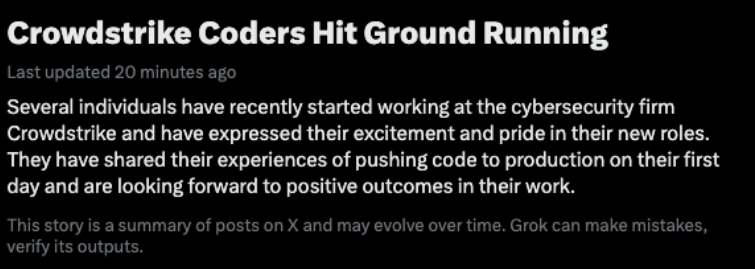
TexTaxToo
Members-
Posts
287 -
Joined
-
Last visited
-
Days Won
15
Everything posted by TexTaxToo
-
Have you checked to see how much would be saved by divorcing and filing as Single? The tax brackets are the same up to $365k ($292k for capital gains). If there are no credits involved, the difference may not be that much. The big difference is between MFS/S and MFJ.
-
Why me? Now? Multi-state psychologist issue
TexTaxToo replied to Margaret CPA in OH's topic in General Chat
I agree with others that you first have to determine whether the trips are primarily for business or primarily personal. If primarily personal, no travel expense is deductible. If primarily business, then you can apportion as necessary (if for example, she extended the stay for personal reasons, she could not deduct those nights). One issue is that your client has not deducted anything for travel in the past. That implies that she considered the trips primarily personal. Does switching from staying with a friend to renting an apartment change the nature of the trips? If the trips are primarily business, then I believe you should deduct all allowable expenses, including mileage or air fare - you should not pick and choose which expenses to deduct. -
Support for Windows 10 continues until October, 2025 (not 2024). You will likely start getting more pop-up "reminders" that the end of support is coming.
-
In general, I agree that annuities don't belong in IRAs. But there may be exceptions. SECURE 2.0 expanded the QLAC provision to allow you to use up to $200,000 of an IRA to purchase a QLAC, and the RMDs on that are eliminated. That may be a reasonable tax strategy for someone whose RMDs force them into a higher bracket. But as has been said, it requires looking at the entire financial picture of the individual.
-
https://www.irs.gov/businesses/small-businesses-self-employed/webinars-for-tax-practitioners The IRS offers the upcoming live webinars to the tax practitioner community: Energy Efficient Home Improvements Credit & Residential Clean Energy Property Credit: How the Inflation Reduction Act revised these credits on Nov. 14, at 2 p.m. ET. Earn up to one continuing education credit (Federal Tax). Certificates of completion are being offered. Beneficial Ownership Information Presented by Financial Crimes Enforcement Network (FinCEN) on Nov. 19, at 2 p.m. ET. No continuing education credit is being offered.
-
- 7
-

-
Accepting payments via cash/check vs. debit/credit
TexTaxToo replied to Medlin Software, Dennis's topic in General Chat
Unfortunately, many professionals and small businesses are starting to add a surcharge for credit cards. For example, my dentist adds 3% - another small business I use adds 3.5% - this more than offsets most rewards, so checks may make a comeback. Surcharges used to be illegal, but the national prohibition went away in 1984, and some state prohibitions have been found unconstitutional - New York started allowing surcharges this year. Now the tax question - is the surcharge by the dentist a deductible medical expense or does it have to be backed out? -
This list of counties is often expanded after the disaster. The list in IR-2024-205 is preceded by this statement (note the "Currently"): "The IRS is offering relief to any area designated by the Federal Emergency Management Agency (FEMA). Currently, this applies to:" and later states: "The same relief will be available to any other counties added later to the disaster area. The current list of eligible localities is always available on the Tax relief in disaster situations page on IRS.gov." And you can always find the current list at FEMA: https://www.fema.gov/disaster/3608/designated-areas along with when the amendments were made. The original disaster was declared on Aug 6. Your 8 counties were added on Aug 8: https://www.fema.gov/disaster-federal-register-notice/3608-em-nc-amendment-001, probably too late to be added to the initial IRS release.
-
I think the IRS intended ID.me to be the long-term and only solution, but they got so much push-back from Congress and the public that they backtracked and said they would consider other options. That was two years ago, and it seems to me they are slow-walking any other options in hope that the critics will fade away. Here are examples of the criticism: https://cyberscoop.com/id-me-government-contracts-house-oversight/ https://www.wyden.senate.gov/imo/media/doc/Letter to FTC on ID.me deceptive statements 051822.pdf (note this is a PDF) https://krebsonsecurity.com/2022/01/irs-will-soon-require-selfies-for-online-access/
-
That's for entities in existance at the beginning of 2024. Entities created (registered) in 2024 have 90 days. Entities created in 2025 or later have 30 days. https://www.fincen.gov/boi-faqs#B_2
-
Well, you might now have to ask if their children were abused. SECURE 2.0 added an new 72(t) exception to the 10% tax for early withdrawals from retirement plans, effective for TY24, for domestic abuse victims. Domestic abuse is defined as "physical, psychological, sexual, emotional, or economic abuse, including efforts to control, isolate, humiliate, or intimidate the victim, or to undermine the victim’s ability to reason independently, including by means of abuse of the victim’s child or another family member living in the household."
-
The IRS has said that for ITINs and ATINs (which they issue), they will consider it issued by the due date of the return if the application is received by the due date and the TIN is eventually issued as a result. They have not said the same for SSNs, which they don't issue, but it can't hurt to try.
-
Apparently, the only way to fix the issue quickly on computers with the BSOD was to reboot each computer into safe mode and delete a configuration file.
-
-
While Kaspersky tends to get good technical reviews, it is Russian-based and the Commerce Department just banned it in the U.S: https://www.bis.gov/press-release/commerce-department-prohibits-russian-kaspersky-software-us-customers
-
Was the return filed by the due date? And was there perhaps a new child on the return (that wasn't there last year)? See this post: https://www.atxcommunity.com/topic/34903-filing-an-amended-return-for-refund-from-june-2021/?do=findComment&comment=212075
-
If a 1099-C is issued, Marilyn is correct that if this was a qualified mortgage on a principal residence, Form 982 is used to exclude the income (or a portion of it). But in this case there was no income as only a 1099-A was issued and the FMV was less than the basis (presumably). So the home sale is just reported on Form 8949 - adjustment code L is used to eliminate the loss so that the reported gain (or loss) is zero. For recourse debt, the amount realized is actually the lesser of the fair market value – or – the debt balance minus any remaining amount owed after the discharge (usually none) – so the lesser of boxes 2 and 4 on Form 1099-A - in this case, the OP stated that the FMV was less than the principal balance, so FMV is correct.
-
Really? The TAS just warned against relying on AI for tax advice: https://www.taxpayeradvocate.irs.gov/news/tax-tips/is-ai-generated-tax-advice-making-the-grade/2024/06/
-
Better late than never? The FAQ on IP PINs changed recently: https://www.irs.gov/identity-theft-fraud-scams/frequently-asked-questions-about-the-identity-protection-personal-identification-number-ip-pin#q22
-
filing an amended return for refund from June 2021.
TexTaxToo replied to schirallicpa's topic in General Chat
Yup, but an ATIN is only good for ODC and CDCC, not CTC or EIC. And it was good for the Recovery Rebate Credit, which I forgot about. But the RRC also required that the SSN or ATIN be issued (or at least applied for) by the due date, so amending won't get you that either. -
filing an amended return for refund from June 2021.
TexTaxToo replied to schirallicpa's topic in General Chat
Note that the PATH act of 2015 changed the law so that one cannot use an SSN or ITIN obtained after the filing deadline to claim credits such as EITC, CTC or ODC, so there may not be any benefit to filing an amended return. From Schedule 8812 instructions and Form 1040 instructions (for EIC) -
I would look at Form 8995-A, Schedule D.
-
The proposed regulations are here: https://www.federalregister.gov/documents/2020/06/10/2020-12213/certain-medical-care-arrangements, but indicate that they take affect when finalized. I also don't believe they have been finalized.
-
Reimbursements of actual expenses are not taxable. You'll get a 1099-LTC with Box 3 indicating that the amounts were reimbursed expenses. You'll file Form 8853 showing nothing is taxable. But if they are paid on a per diem basis, Box 3 will indicate per diem and any amounts in excess of the actual expenses OR an excluded minimum are taxable. The excluded amount changes each year and can go up or down ($390 for 2022, $420 for 2023, $410 for 2024). So if the actual expenses amounted to $300/day for 2023, they would only have to pay taxes on payments in excess of $420/day. If actual expenses amounted to $500/day, the excluded amount is irrelevant and they pay taxes on payments in excess of $500/day. (You look at the totals, not the actual per day expenses) Accelerated death benefits from life insurance are reported in Box 2, but are not taxable if terminally ill (otherwise, they are treated as Box 1 amounts and are only taxable to the extent they exceed expenses or the excluded amount).



